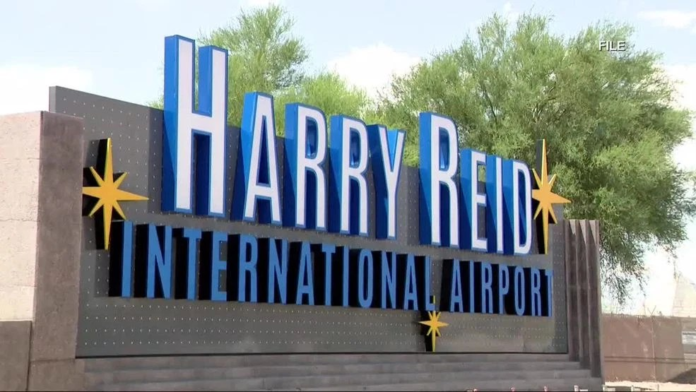LAS VEGAS (KSNV) — The ongoing federal government shutdown is having a profound impact on air travel, particularly at smaller airports like Hollywood-Burbank Airport. Flights from this busy hub have faced significant delays, primarily due to an unstaffed air traffic control tower. This situation paints a compelling picture of how staffing shortages can lead to cascading effects throughout the aviation system, influencing even major airports such as Harry Reid International Airport in Las Vegas.
The specific scenario at Hollywood-Burbank Airport highlights just how interconnected air travel has become. Though fewer than 20 flights connect Burbank and Las Vegas each day, the implications of staffing shortages are vast. The abrupt delays have left many passengers frustrated and anxious, illustrating a ripple effect that isn’t confined to just one airport.
Rachel Smith, a News 3 Entertainment Correspondent, shared her personal experience of being caught in the chaos. Smith noted, “It never starts off good when you start getting the alerts from the airline that your flight at 5 is now delayed until 8:30.” The airport’s atmosphere was described as a “ghost town,” with passengers left scrambling to make sense of the uncertainty. With some travelers needing to rush home for important commitments—like surgeries or work obligations—the stakes were especially high.
As Smith recounted, after three hours of waiting, passengers were told they would start boarding at 7:30, despite the absence of air traffic controllers. “I was asking airport personnel how we were gonna fly without air traffic controllers,” she said, underscoring a key concern about safety and efficiency when faced with such shortages.
The lack of personnel at the Hollywood-Burbank control tower was particularly alarming; it was unmanned from approximately 4 p.m. until around 10 p.m. During this period, aviation operations were hampered, raising questions about the broader ramifications for air travel across Southern California and beyond.
Aviation expert and pilot Reed Yadon emphasized that while some staffing shortages can be managed temporarily, prolonged gaps in air traffic control coverage could present more significant risks, especially for major airports like Harry Reid International. “If there are shortages in FAA facilities,” Yadon explained, “it could take longer to get aircraft in the air and longer to get them where they’re going.” This sentiment reflects the interconnected nature of air traffic management, where problems at smaller airports can escalate into larger systemic issues.
For his part, Transportation Secretary Sean Duffy assured the public that safety remains the top priority in these challenging circumstances. “Is our airspace unsafe? No,” Duffy stated firmly. He went on to emphasize that should any safety issues arise, the decision to shut down airspace would be made promptly to protect passengers and crew alike.
Despite the absence of air traffic controllers at Hollywood-Burbank, a team from San Diego stepped in to manage the airspace in Southern California. This move illustrates the adaptability and resourcefulness of the aviation community in times of crisis. However, it’s a temporary fix in an environment where sustained challenges threaten to compromise the reliability and safety of air travel.
